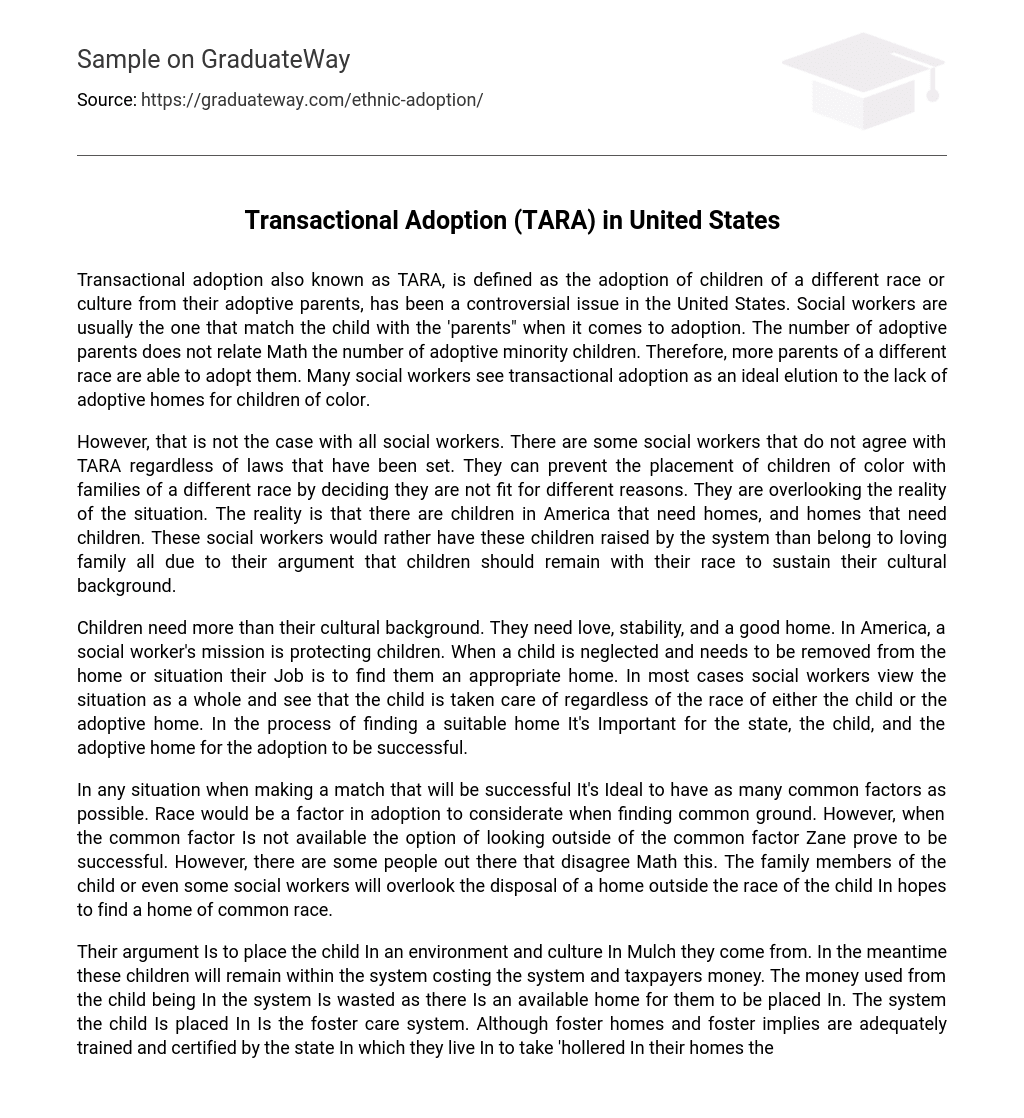Transactional adoption also known as TARA, is defined as the adoption of children of a different race or culture from their adoptive parents, has been a controversial issue in the United States. Social workers are usually the one that match the child with the ‘parents” when it comes to adoption. The number of adoptive parents does not relate Math the number of adoptive minority children. Therefore, more parents of a different race are able to adopt them. Many social workers see transactional adoption as an ideal elution to the lack of adoptive homes for children of color.
However, that is not the case with all social workers. There are some social workers that do not agree with TARA regardless of laws that have been set. They can prevent the placement of children of color with families of a different race by deciding they are not fit for different reasons. They are overlooking the reality of the situation. The reality is that there are children in America that need homes, and homes that need children. These social workers would rather have these children raised by the system than belong to loving family all due to their argument that children should remain with their race to sustain their cultural background.
Children need more than their cultural background. They need love, stability, and a good home. In America, a social worker’s mission is protecting children. When a child is neglected and needs to be removed from the home or situation their Job is to find them an appropriate home. In most cases social workers view the situation as a whole and see that the child is taken care of regardless of the race of either the child or the adoptive home. In the process of finding a suitable home It’s Important for the state, the child, and the adoptive home for the adoption to be successful.
In any situation when making a match that will be successful It’s Ideal to have as many common factors as possible. Race would be a factor in adoption to considerate when finding common ground. However, when the common factor Is not available the option of looking outside of the common factor Zane prove to be successful. However, there are some people out there that disagree Math this. The family members of the child or even some social workers will overlook the disposal of a home outside the race of the child In hopes to find a home of common race.
Their argument Is to place the child In an environment and culture In Mulch they come from. In the meantime these children will remain within the system costing the system and taxpayers money. The money used from the child being In the system Is wasted as there Is an available home for them to be placed In. The system the child Is placed In Is the foster care system. Although foster homes and foster implies are adequately trained and certified by the state In which they live In to take ‘hollered In their homes they are not the best place for a child. A child needs stability and a loving home, a permanent home. The United States. Social workers are usually the one that match the child with the Ninth the number of adoptive minority children. Therefore, more parents of a different FAR regardless of laws that have been set. They can prevent the placement of Children of color with families of a different race by deciding they are not fit for boning family all due to their argument that children should remain with their race finding a suitable home it’s important for the state, the child, and the adoptive home successful it’s ideal to have as many common factors as possible.
Race would be a common factor is not available the option of looking outside of the common factor can prove to be successful. However, there are some people out there that disagree Ninth this. The family members of the child or even some social workers will overlook the disposal of a home outside the race of the child in hopes to find a home of mono race. Their argument is to place the child in an environment and culture in Inch they come from.





